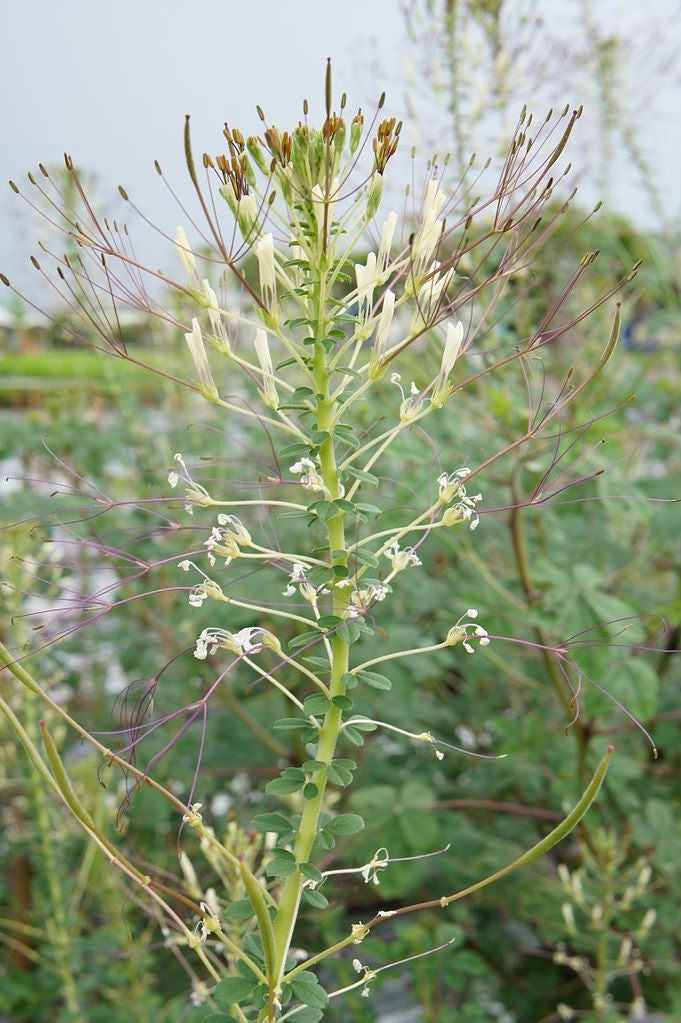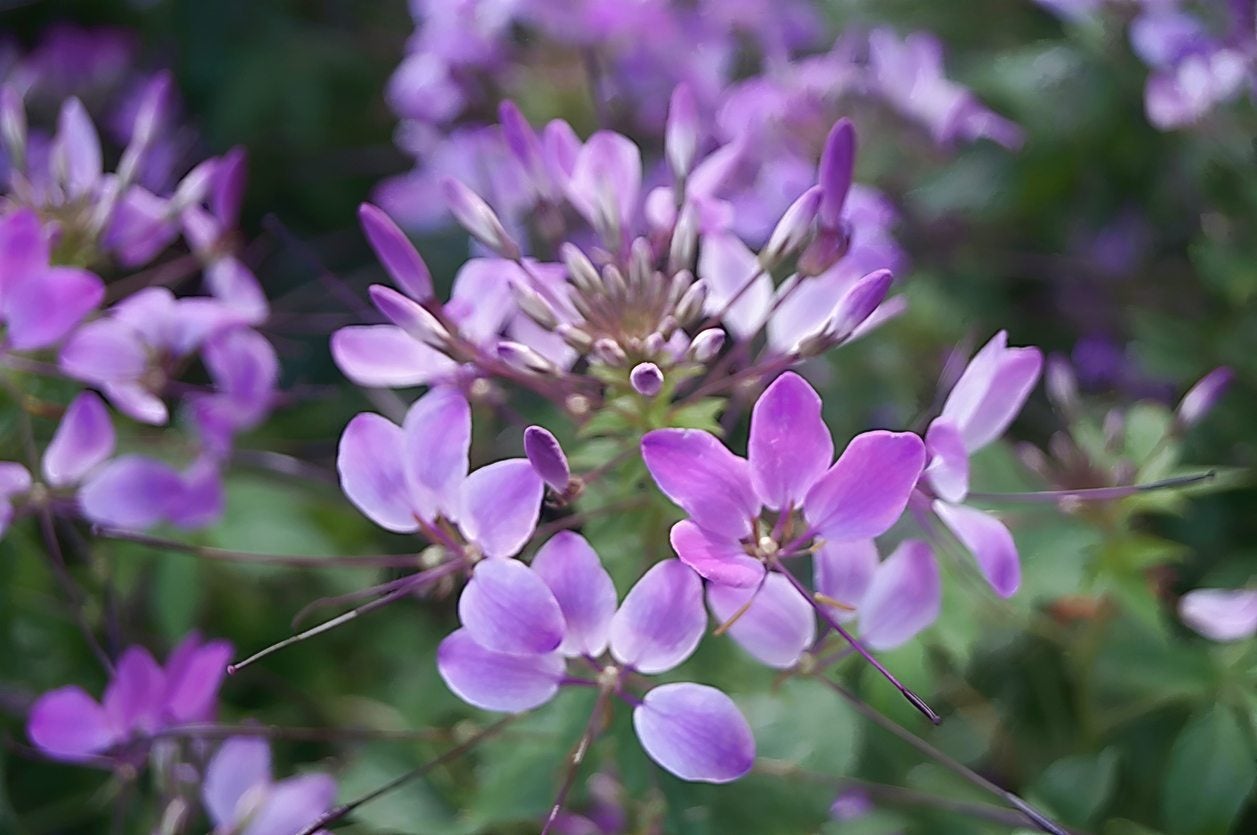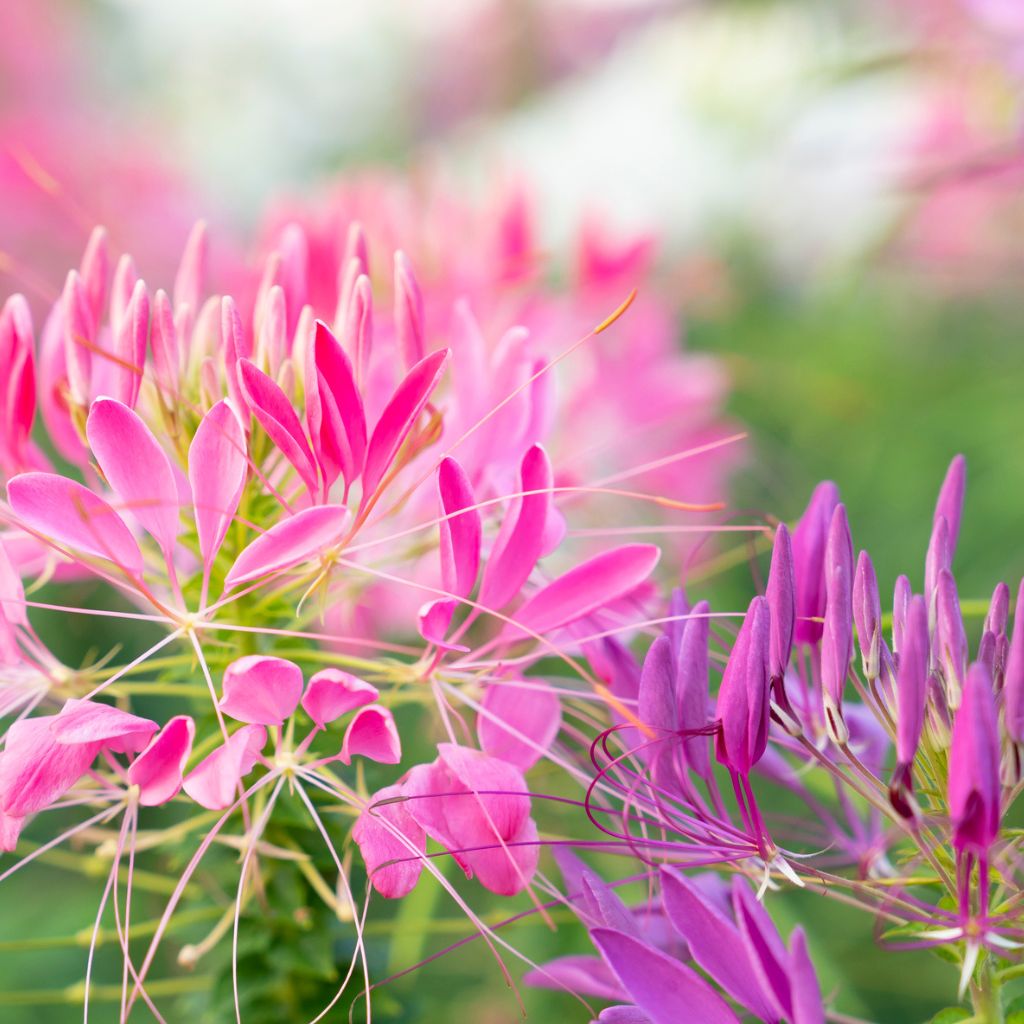What Is Chinsaga – Chinsaga Vegetable Uses And Growing Tips

Many people have never heard of chinsaga or African cabbage before, but it is a staple crop in Kenya and a famine food for many other cultures. What exactly is chinsaga? Chinsaga (Gynandropsis gynandra/Cleome gynandra) is a subsistence vegetable found in tropical to subtropical climates from sea level into the higher elevations of Africa, Thailand, Malaysia, Vietnam, and many others regions. In the ornamental garden, we may actually know this plant as African spider flower, a relative of cleome flowers. Keep reading for more information on growing chinsaga vegetables.
What is Chinsaga?
African cabbage is an annual wildflower that has been introduced in many other tropical to subtropical parts of the world, where it is often considered an invasive weed. Chinsaga vegetable can be found growing along roads, in cultivated or fallow fields, along fences, and irrigation canals and ditches.
It has an erect, branching habit that usually attains heights of between 10 to 24 inches (25-61 cm.). The branches are sparsely leafed with three to seven oval leaflets. The plant blooms with white to rose colored blooms.
Additional Chinsaga Information
Since African cabbage is found in so many places, it has a plethora of whimsical names. In English alone, it may be referred to as African spider flower, bastard mustard, cat’s whiskers, spider flower, spider wisp, and wild spider flower.
It is high in several nutrients, including amino acids, vitamins, and minerals and, as such, is an important part of the diets of many Southern African people. The leaves are around 4% protein and also have antioxidative properties.
Chinsaga Vegetable Uses
African cabbage leaves can be eaten raw but are usually cooked. The Birifor people cook the leaves in sauce or soup after washing and chopping them. The Mossi people cook the leaves in couscous. In Nigeria, the Hausa eat both the leaves and seedlings. In India, the leaves and young shoots are eaten as fresh greens. People in both Chad and Malawi eat the leaves as well.
In Thailand, the leaves are commonly fermented with rice water and served as a pickle condiment called phak sian dong. The seeds are also edible and are often used in place of mustard.
Gardening tips, videos, info and more delivered right to your inbox!
Sign up for the Gardening Know How newsletter today and receive a free copy of our e-book "How to Grow Delicious Tomatoes".
Another chinsaga vegetable use is not culinary. Due to the antioxidative properties the leaves have, they are sometimes used as a medicinal herb to aid people with inflammatory diseases. The roots are used to treat fever and juice from the root to treat scorpion stings.
How to Grow African Cabbage
Chinsaga is hardy to USDA zones 8 through 12. It can tolerate sandy to loamy soils but prefers well-draining soil with a neutral to basic pH. When growing chinsaga vegetables, be sure to select a site that has full sun with plenty of room to spread.
Sow seeds on the soil’s surface or lightly cover with soil in the spring indoors, or in a greenhouse. Germination will take place in 5 to 14 days at 75 degrees F. (24 C.). When the seedlings have their first couple sets of leaves and soil temperatures have warmed, harden them off for a week prior to transplanting outside.

Amy Grant has been gardening for 30 years and writing for 15. A professional chef and caterer, Amy's area of expertise is culinary gardening.
-
 Looking For Plants To Give You The Soft And Fuzzies? Try These 5 Fuzzy Leaf Plant Options
Looking For Plants To Give You The Soft And Fuzzies? Try These 5 Fuzzy Leaf Plant OptionsLovers of texture, drama, silver foliage and tactile plants will adore these special sensory garden additions. These fuzzy leaf plant options will leave you all aglow
By Susan Albert
-
 Get Ready For A Summer Of Hummers! Grow These Full Sun Hummingbird Plants and Flowers
Get Ready For A Summer Of Hummers! Grow These Full Sun Hummingbird Plants and FlowersIf you’re lucky enough to enjoy a sunny backyard, make sure you are maxing out on your pollinator opportunities and grow these full sun hummingbird plants and flowers
By Tonya Barnett
-
 What Is A Rocky Mountain Bee Plant – Learn About Rocky Mountain Cleome Care
What Is A Rocky Mountain Bee Plant – Learn About Rocky Mountain Cleome CareWhile considered weedy, many people see Rocky Mountain bee plant as a wildflower and some choose to cultivate it for its pretty flowers and to attract pollinators. With some helpful info from this article, you can determine if this annual will grow well in your garden.
By Mary Ellen Ellis
-
 Cleome Spider Flower - How To Grow Cleome
Cleome Spider Flower - How To Grow CleomeGrowing cleomes is a simple and rewarding garden adventure. Planting cleomes is often necessary only once, as this attractive annual flower re-seeds each year. Learn how to grow these plants in this article.
By Becca Badgett